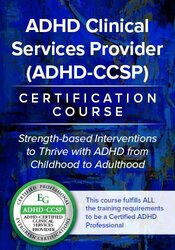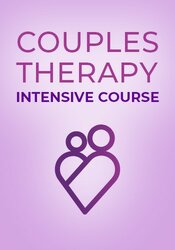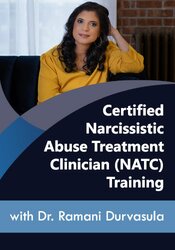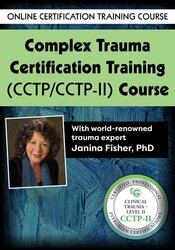Description
If you want to be successful at helping your clients manage anxiety, understanding the emotional responses of the amygdala and the cognitive processes in the cortex is crucial.
Watch the esteemed neuroscience and anxiety expert, Catherine M. Pittman, PhD, HSPP, in this intensive Anxiety Certification Masterclass. With clear and accessible language, Dr. Pittman will guide you through the complex neuroscience underpinning anxiety, emphasizing the pivotal role of the amygdala in perpetuating anxiety symptoms.
You’ll learn practical applications to therapy that will not only alleviate your client’s anxiety but also induce positive, lasting changes in the way their brain responds to anxiety and fear. Through engaging case examples, experiential activities, and reproducible handouts, you’ll discover first-hand how to:
- Target amygdala and cortex to provide maximum relief from anxiety symptoms
- Identify client’s origin of anxiety and help them understand their fight/flight/ freeze response
- Accurately diagnose anxiety disorders and anxiety-based disorders, including Panic Disorder, Agoraphobia, Social Anxiety Disorder, Generalized Anxiety Disorder, OCD, & PTSD
- Quiet the vagus nerve using breathing and meditation exercises
- Increase tolerance to anxiety and retrain the amygdala through exposure techniques
- Establish healthy levels of amygdala activation using sleep and yoga exercises
- Reduce cognitions that produce anxiousness with cognitive restructuring techniques
Purchase today to embark on a transformative journey with our Anxiety Certification Masterclass! Upon completion, you’ll qualify for certification as a Certified Clinical Anxiety Treatment Professional (CCATP) through Evergreen Certifications. Certification signals to colleagues, employers, and clients that you’ve dedicated additional time and effort to comprehend the intricacies of anxiety counseling. Professional standards apply. Visit www.evergreencertifications.com/CCATP for details.
Don’t miss this opportunity to demystify the brain and help your clients conquer their anxiety!
CERTIFICATION MADE SIMPLE!
- No hidden fees – PESI pays for your application fee (a $99 value)*!
- Simply complete this training and the post-event evaluation included in this training, and your application to be a Certified Clinical Anxiety Treatment Professional (CCATP) through Evergreen Certifications is complete.*
Attendees will receive documentation of CCATP certification from Evergreen Certifications 4 to 6 weeks following completion.
*Professional and clinical experience standards apply. Visit www.evergreencertifications.com/CCATP for professional requirements.
CPD
Planning Committee Disclosure - No relevant relationships
All members of the PESI, Inc. planning committee have provided disclosures of financial relationships with ineligible organizations and any relevant non-financial relationships prior to planning content for this activity. None of the committee members had relevant financial relationships with ineligible companies or other potentially biasing relationships to disclose to learners. For speaker disclosures, please see the faculty biography.
CPD
This online program is worth 12 hours CPD.
Speaker
Saint Mary's College
Catherine M. Pittman, PhD, HSPP, is a professor of psychology at Saint Mary’s College, Notre Dame, IN. Dr. Pittman is the author of the popular book, Rewire Your Anxious Brain: How to Use the Neuroscience of Fear to End Anxiety, Panic, and Worry. She has a background in cognitive behavioral therapy, neuropsychology, fear-conditioning research, and treated anxiety-based disorders in clinical practice for over 25 years. Catherine’s experience makes her uniquely qualified to provide a clear understanding of neuroscience and how that informs the selection and application of successful anxiety treatment strategies. She regularly presents workshops at national conferences and national webinars on anxiety treatment and is an active member of the public education committee of the Anxiety and Depression Association of America.
Speaker Disclosures:
Financial: Dr. Catherine Pittman maintains a private practice and has an employment relationship with Saint Mary's College. She is an author with New Harbinger, Foliadeux Press, and PESI Publishing and receives royalties. She receives a speaking honorarium and recording royalties from PESI, Inc. She has no relevant financial relationships with ineligible organizations.
Non-financial: Dr. Catherine Pittman is a member of the Benzodiazepine Information Coalition and the Anxiety and Depression Association of America.
Additional Info
Access for Self-Study (Non-Interactive)
Access never expires for this product.
For a more detailed outline that includes times or durations of time, if needed, please contact cepesi@pesi.com.
Objectives
- Create a psychoeducation program that clearly explains the roles of the amygdala and cortex in perpetuating anxiety disorders and how to target both for effective treatment of anxiety symptoms.
- Teach clients how to interpret the language of the amygdala, facilitating improved treatment engagement, and enhancing overall levels of functioning.
- Train clients how to label their anxiety-related experiences in order to effectively target symptoms and promote mindfulness.
- Assess physical and cognitive symptoms of anxiety to accurately diagnose, tailor treatment plans, monitor progress, and engage clients in a brain-based, empowering therapeutic process.
- Demonstrate the ability to apply DSM-5-TR™ criteria to differentially diagnose various anxiety disorders and identify common comorbidities with other disorders including depression.
- Integrate exposure techniques to increase client’s tolerance to anxiety when it is clinically appropriate to do so.
- Design client-tailored strategies such as exercise and sleep interventions to calm the amygdala.
- Teach clients breathing exercises to quiet the amygdala and stimulate the vagus nerve in and out of session.
- Integrate cognitive restructuring techniques to reduce cognitions that produce anxious responding by igniting amygdala activation.
- Recognize the indications for medication referrals in the treatment of anxiety disorders and ways to promote their effective use.
- Evaluate the relationship of the cortex to the amygdala and their contributions to anxiety as it relates to treatment strategies.
- Demonstrate the ability to accurately diagnose anxiety disorders, engage clients in goal-setting, and train client’s to identify the role of their amygdala in symptoms.
Outline
THE NEUROSCIENCE OF THE AMYGDALA’S ROLE IN GENERATING FEAR AND ANXIETY
Amygdala’s Role in Defending Us from Danger & Creating Anxiety-Producing Memories
- How the Amygdala:
- Perceives threat and triggers the body’s fear response
- Learns and contributes to the formation of emotional memories and behaviors
- Communicates, processes, and regulates emotions
Teach Clients How the Brain Creates Their Anxiety
- Two Brain Pathways that Produce Anxiety:
- How the amygdala triggers emotion with fight, flight, freeze response
- How the cortex activates the amygdala
- Why it’s essential to target both for maximum relief
- Help clients recognize where their physical symptoms are coming from: Anxiety survey and examples
- Promote mindfulness
Diagnose Anxiety Disorders and Anxiety-Based Disorders
- Accurately use DSM-5-TR ™ to Diagnose:
- Panic Disorder, Agoraphobia, Social Anxiety Disorder, Generalized Anxiety Disorder, OCD, & PTSD
- Tips for differential diagnosis
- Comorbidity of Major Depressive Disorder
- Case examples throughout
Psychoeducation that Promotes Motivation and Engagement in Anxiety Treatment
- Teach Clients How:
- The brain creates anxiety, worry, and panic
- To connect the amygdala to their anxiety concerns: Worksheets on where anxiety begins, explanations, examples
- The amygdala needs vivid experiences to learn
- To train their amygdala to be less reactive
- Avoiding anxiety is dangerous
- Limitations of research and potential risks
- Case examples throughout
CLINICAL GUIDE TO EFFECTIVELY REDUCE FEAR AND ANXIETY RESPONSES IN TREATMENT:
Connect Client’s Amygdala to Goal Setting: Examples
- Address client’s complaints about their lives
- How clients label their anxiety-related experiences can focus interventions
- Help clients see how anxiety is blocking goals: Worksheets
- Why goal setting is essential
- Guidelines to draw out and identify goals
- How/where anxiety interferes with client goals
How to Calm the Amygdala
- Amygdala-focused Interventions:
- Breathing exercises that calm amygdala and activate vagus nerve
- Exercise that establish healthy levels of amygdala activation
- Tips to engage clients in exercises and activities
- Case examples provided throughout
Increase Tolerance to Anxiety: Exposure Techniques
- Teach clients to communicate in the language of the amygdala
- Importance of SUDS ratings for communicating with clients
- Developeing a hierarchy
- Seven general guidelines for exposure
- Six tips for exposure effectiveness
- Case examples provided throughout
How to Fight Anticipation and Worry
- Cortex-Focused Interventions:
- Cognitive approaches to target the cortex
- Identify amygdala-activating cognitions with surveys
- Remember “survival of the busiest” rule
- You can’t erase, you must replace
- The amygdala watches cortex television
- Change the channel in the cortex
- Case examples provided throughout
Incorporate Medication into Anxiety Treatment
- Indications for medications
- How to refer to physician, psychiatrist
- Impact of SSRIs, SNRIs on cortex, amygdala
- Impact of benzodiazepines on cortex, amygdala
- Client education about medication use, effects
Target Audience
- Social Workers
- Psychologists
- Physicians
- Counsellors
- Art Therapists
- Marriage and Family Therapists
- Case Managers
- Addiction Counsellors
- Speech-Language Pathologists
- Therapists
- Other Mental Health Professionals
Reviews
Overall:
5
Total Reviews: 7
















